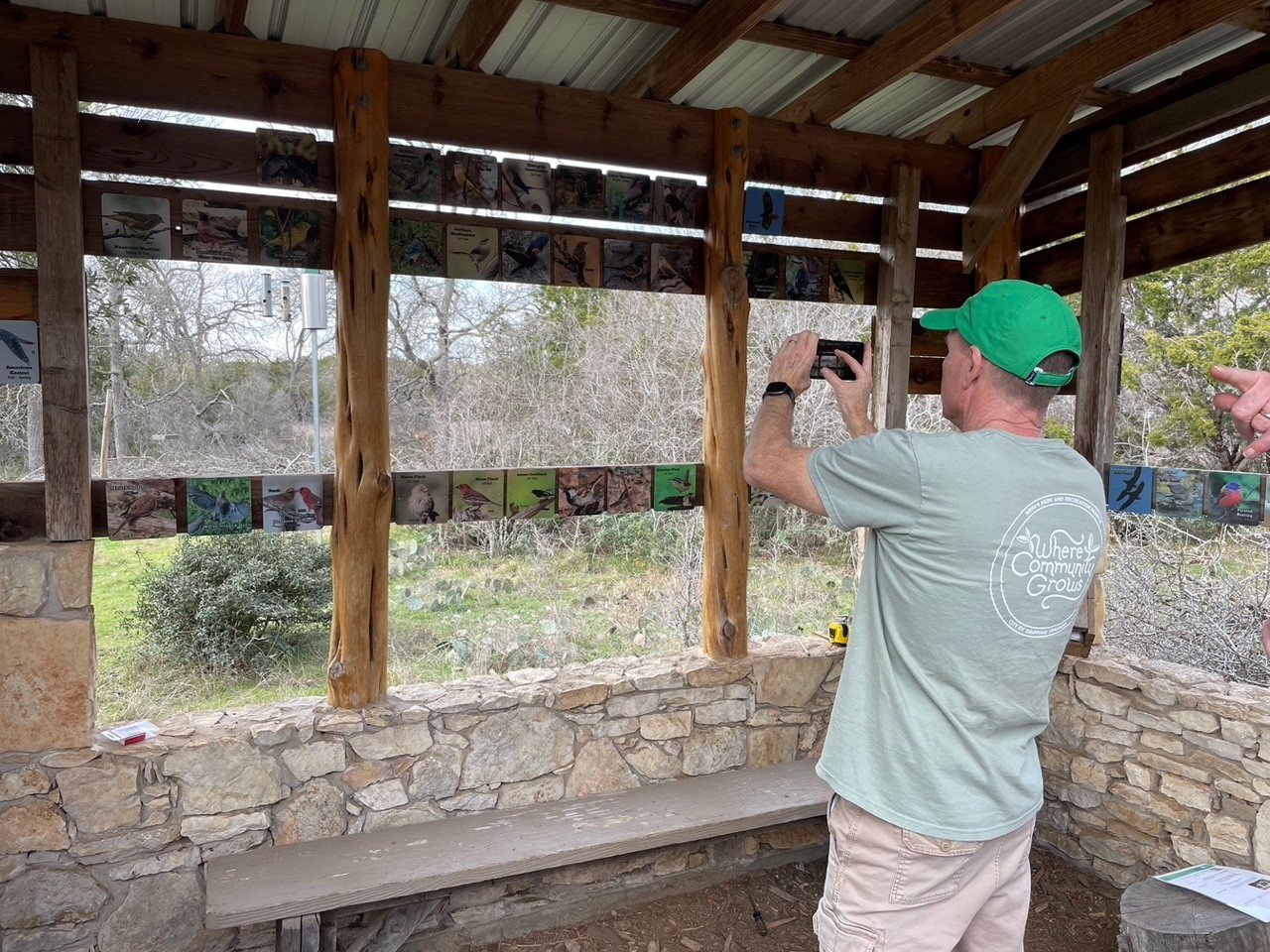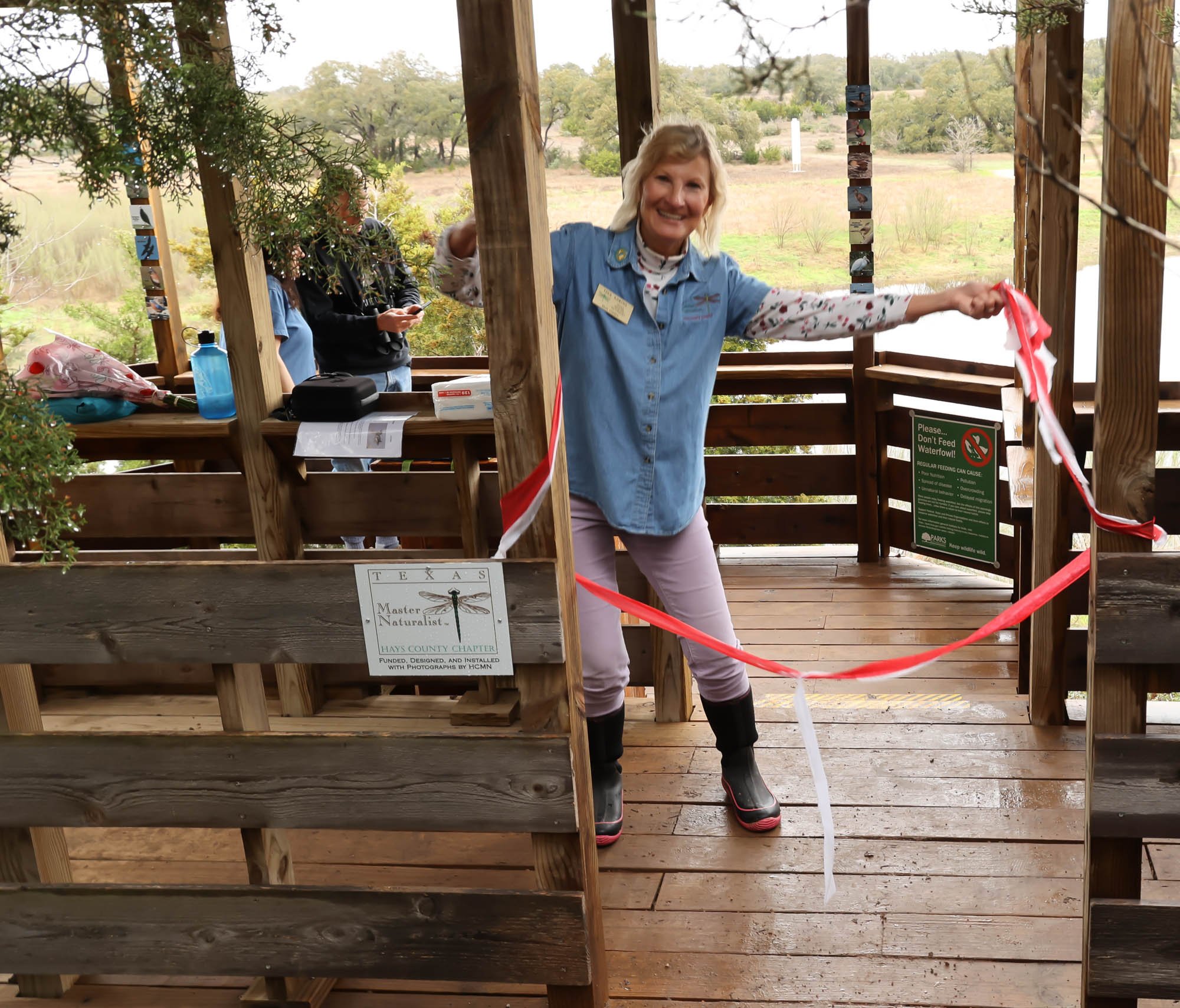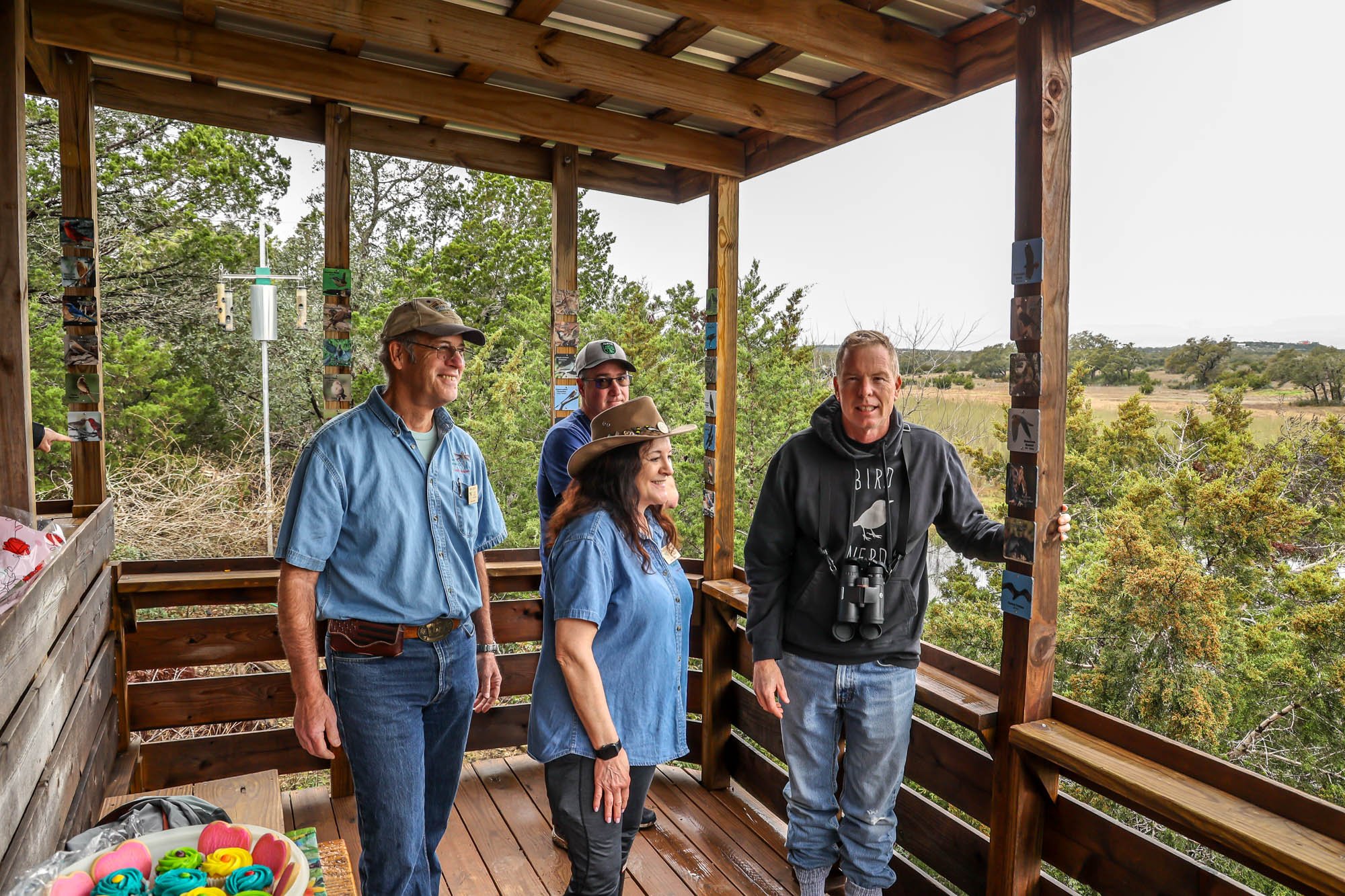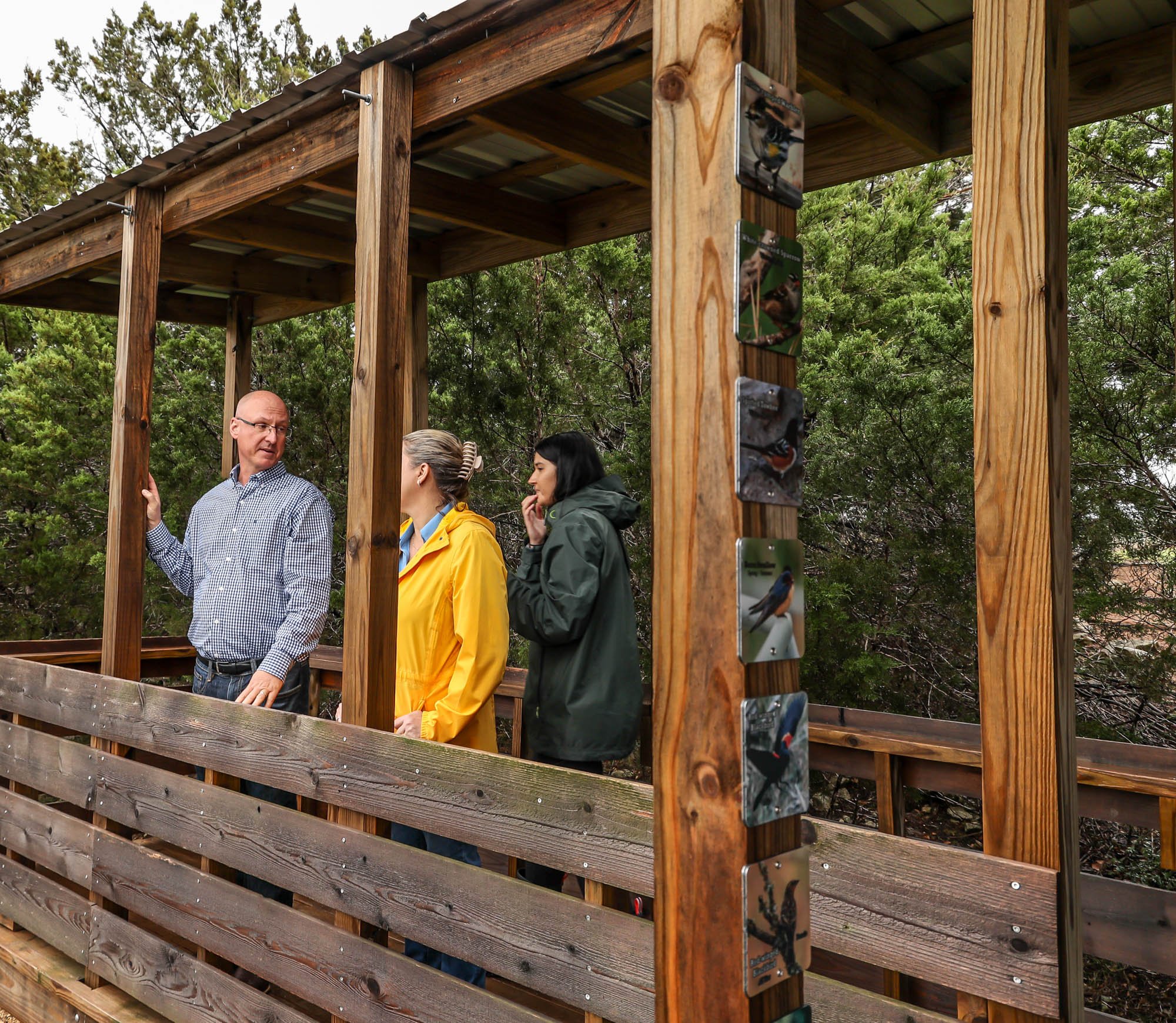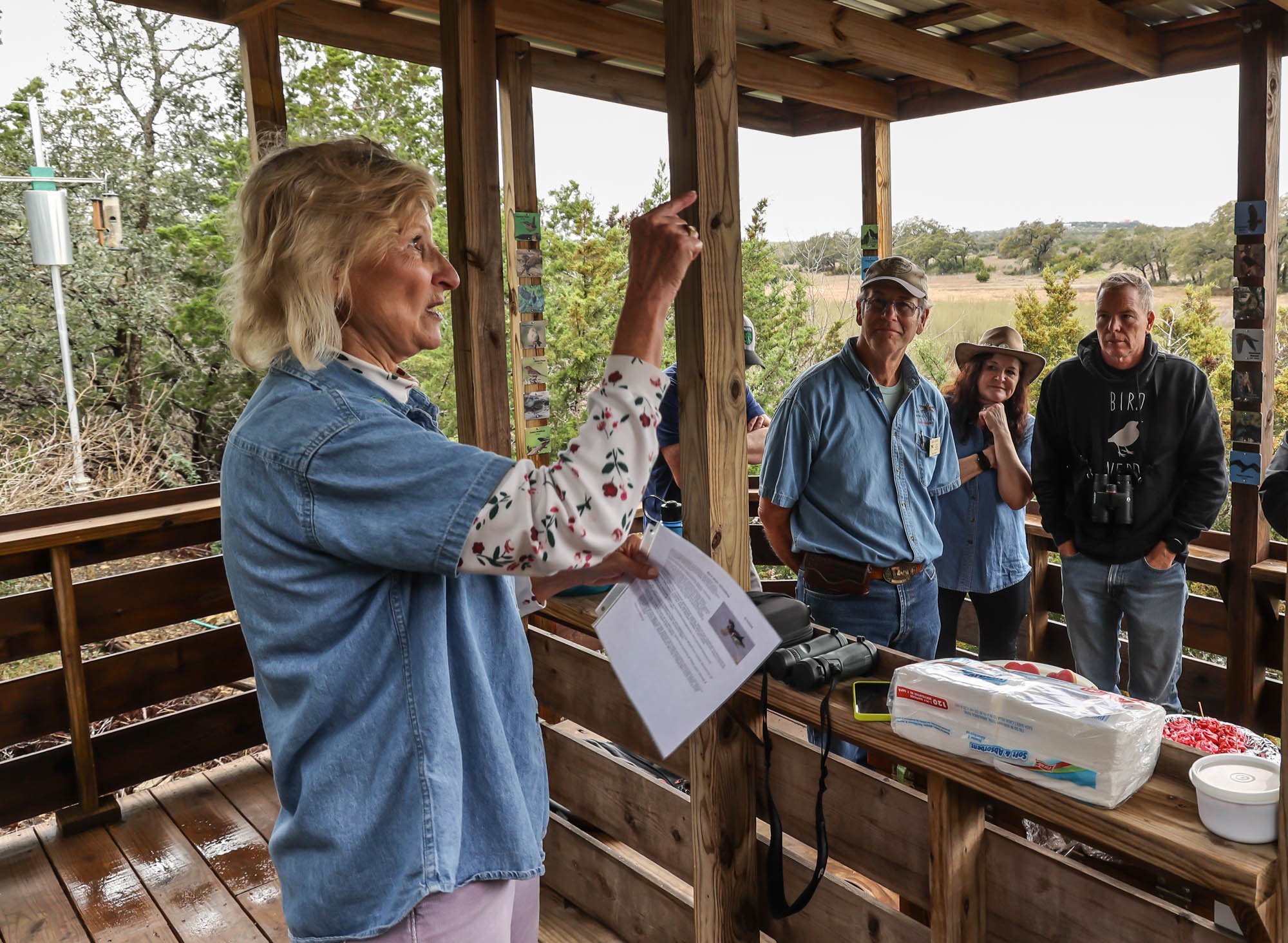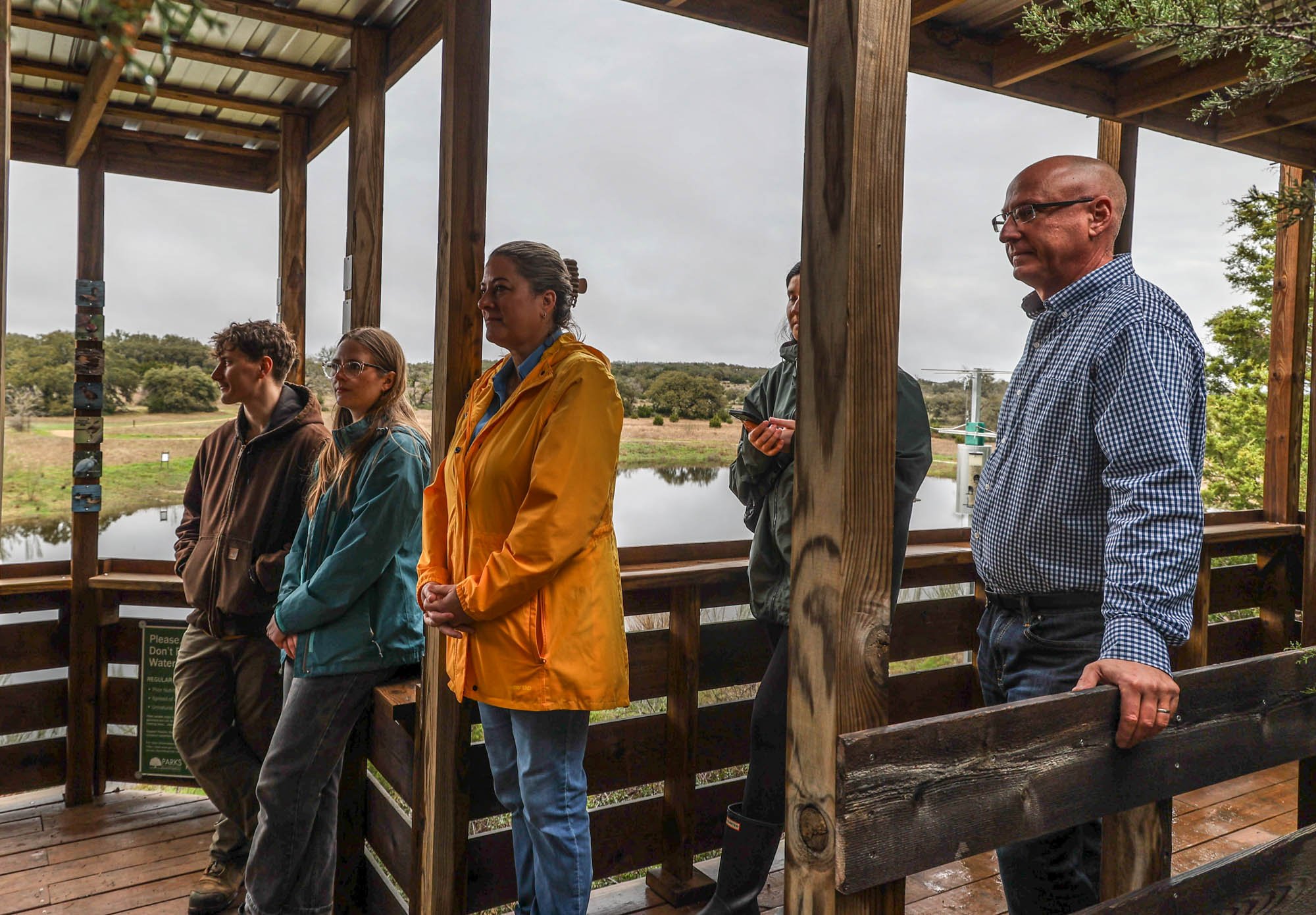Modern Pictographs
HCMN Bird Identification Project
“A picture is worth a thousand words.” —generally attributed to Fred R. Barnard
Tina Adkins
“A picture is worth a thousand words.” It’s a common saying, meaning that complex and sometimes multiple ideas can be conveyed by a single still image more effectively than a lengthy verbal description. This saying encapsulates a true Naturalist’s view of the world. Just as ancient humans drew their natural world with charcoal and ochre on cave walls, we moderns rely on photography to enrich our experience of Nature. Photographs—our own, or in species guides and field signage—are the pictographs we leave as guide and document for one another.
Verbal descriptions detailing habitat, size, shape, posture, color, pattern, and behavior can always help to identify most species in the animal kingdom. However, when you are actually in the field, waiting silently, observing animals, especially birds, time is of the essence. A flit here, a peck there, or a quick movement in your periphery can often be hidden among grasses, shrubs, and tree limbs. Then the bird simply takes flight and disappears from sight, totally out of range. Many folks find this to be frustrating when trying to put a name on the bird they’ve just seen.
Michael Meves at Dripping Springs Ranch Park bird blind.
Most naturalists and birders have learned the art of patience. After scoping out an ideal spot to hunker down quietly and wait for the right moment to capture a Ruby-crowned Kinglet, for instance, you may get only a peek. An actual close-up photograph would be a real prize for your perseverance! That bird can then be easily identified only if you are an experienced birder. And even knowledgeable birders need to refer to field guides for correct identifications. Seeing a high resolution photo with color or pattern distinctions that are tell-tale identifiers of certain species would be helpful and educational, especially for a novice birder.
In 2023, our Hays County birders spoke, and Hays County Master Naturalists listened. There was a need for durable, colorful signs in the bird blinds at both Dripping Springs Ranch Park (DSRP) and Charro Ranch Park (CRP). Both parks’ bird blinds had on hand thick books of numerous local species, with one bird species featured on a single page, including detailed descriptions and a picture. One of those books was years old and tattered from much use and outside exposure. Both books included birds which would rarely have been seen in that location, adding unnecessary clutter. It is very difficult for birders to both observe quietly and simultaneously use big books to identify birds. So a new project was definitely needed. This was to be the Bird Identification Project.
Funding a new project is of prime importance. An application for a HCMN Willett/Firefly Project Grant was submitted and approved in the Spring of 2023.
Approval from the City of Dripping Springs was the next step. First, HCMN made a citizens’ presentation at the Parks and Recreation Commissioner’s meeting. Then the project was placed on the City’s June agenda to include the conceptual design of the Bird Identification Project. This project was also presented separately to the DSRP Board during their monthly meeting. A donation form was completed for the City of Dripping Springs.
Tina Adkins at the ribbon cutting ceremony—Dripping Springs Ranch Park bird blind.
Dripping Springs Ranch Park signage displays.
Design of the Bird Identification signage had to fit each of the two bird blinds. Both blinds were open for easy viewing but differed in how they were constructed. The mounting surface for signs at CRP would primarily be 6”or 8” wide boards, while at DSRP the signs would need to be mounted to 4” posts. Therefore, a 6” square sign was needed for CRP and a 4” square sign for DSRP. However, all other aspects of the signs (material, shape, photos) would be the same to demonstrate a unified and consistent Hays County Master Naturalist presence in both Dripping Springs parks.
Charro Ranch Park signage display.
Durability was of major concern. After consulting several sign companies, we decided to use an aluminum composite material, which can withstand UV light and all weather conditions. This material is preferred over plastic laminated signs, which warp, fade, and degrade outside. Another advantage for the individually mounted signs is that they can easily be replaced or added to on a case by case basis if the need arises.
Species selection? Here the fundamental question is which birds to select out of 660 Central Texas species! To determine the right number, we used data from the DSRP Fall BioBlitz 2022, from eBird, and from FeederWatch, along with input from local experienced birders, who also provided input on the specific season(s) when each species is seen in Dripping Springs. We generated a tentative list of bird species along with a feasible number of signs appropriate for each bird blind.
And how many signs would be manufactured? We decided on 50 signs for CRP and 60 signs for DSRP.
Now for the perfect photographs, with those tell-tale identifying characteristics of each bird species! Since this is a project funded and designed by Master Naturalists, of course we asked well-known Hays County Master Naturalist (HCMN) photographers for the selected bird photos. We sent our list of species to six Hays County photographers: Stephanie Bowers, Betsy Cross, Mike Davis, Eva Frost, Tom Hausler, and Alice Le Duc.
Signage at Charro Ranch Park
We also needed signage text. To the bird photos, we added names of each bird species, their seasonal presence in the area, and their gender when sexually dimorphic (males and females look different). We chose a large clear Rockwell font. Black font was used for lighter backgrounds, while white font with black outline was used for darker backgrounds requiring greater visibility. Grapevine Signs and Designs in Dripping Springs was chosen to manufacture the signs.
Revisions?—of course! If signage is to be useful over its lifetime, it has to be right. Along the way, our bird species names would be revised according to the proper naming convention. Specific placement of the titles or font for each bird was reviewed to eliminate background interference. Sometimes adjustments were made to the seasons in which each bird is seen locally. Still other times, the bird needed to be repositioned to avoid interference with the sign’s drill holes. Grapevine suggested that a few photos might not be ideal for signs or visibility, so we located different photos. At last, after four revisions, manufacturing could finally begin! These things, if done right, can be complicated.
The signs were completed in late January 2024 and were installed by a team of four Master Naturalists at each park’s bird blind. A larger HCMN sign was also installed at each bird blind. An unveiling or ribbon cutting was held at DSRP February 10th (despite the recent rain and mud) with City, Park, and Commissioner officials present, along with Master Naturalists Tina and Bob Adkins, Michael Meves, Kat Schmidt, and Tom Hausler, and HCMN Trainees Kyle Hagan and Caylie Houchin, who are also staff members of DSRP. Some families visiting the park also enjoyed the myriad of new bird signs. Bird seed was dispersed generously instead of confetti to highlight the event.
Now, with a mere glance, these individual and colorful bird signs will help educate the public and inspire new birders in identifying Hays County’s diverse bird species. They are our modern pictographs, documenting our natural world now and, we hope, in generational memory far into our future.
Among many birding events available to you, enjoy FeederWatch, Great Backyard Bird Count (GBBC), and World Migratory Bird Day.
Have fun birding!
Photos for this article were contributed by HCMNs Tom Hausler and Tina Adkins and Stephanie Hartnett, Marketing Specialist for the City of Dripping Springs!


